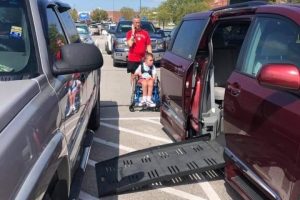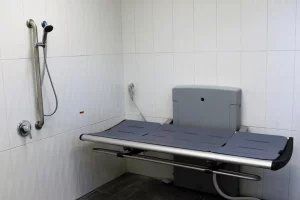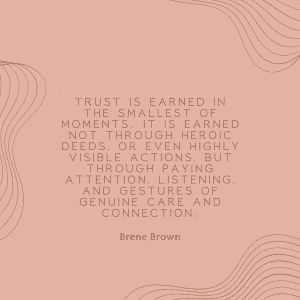 We traveled home to Texas for Spring Break to spend time with grandparents and cousins. We rode public transportation, stayed in hotels, fought the crowds, and played tourist. My daughter Luisa, diagnosed with Rett Syndrome, was with us throughout. As a family affected by disability, traveling can be tricky. Our home is tailor-made to fit Luisa’s needs. Outside our bubble we acutely feel society’s lack of accommodations for those with unique needs.
We traveled home to Texas for Spring Break to spend time with grandparents and cousins. We rode public transportation, stayed in hotels, fought the crowds, and played tourist. My daughter Luisa, diagnosed with Rett Syndrome, was with us throughout. As a family affected by disability, traveling can be tricky. Our home is tailor-made to fit Luisa’s needs. Outside our bubble we acutely feel society’s lack of accommodations for those with unique needs.
I’ve fostered several survival techniques on this disability journey, like gratitude. Also, the ability to find beauty in the ordinary. And finally, no complaining. That one was imparted to me as a little girl by my momma. Yet, harnessing all these practices cannot dull the discomfort of traveling with a wheelchair or navigating a society ill-equipped to meet my daughter’s needs.

I discussed some of our challenges with friends recently. Their response was, “Wow! I never considered that!” This made me wonder, “How much of this disability life could be improved if others understood the challenges?”
From the outset I want to highlight that disability exists on a wide spectrum. Our daughter falls on the more severe end as she requires assistance with all aspects of daily living from feeding to walking to bathing to communicating. Those on the less severe side of disability may experience different hurdles than we do. I also want to mention that I write from the perspective of a caregiver, not as a person with a disability. Those are two very different sets of eyes.
Here are five obstacles we face as a family affected by a severe disability:
1. Airplane Travel
Airplanes are the opposite of “wheelchair friendly.” Even in a post-ADA (Americans with Disabilities Act (ADA)) world, airplanes remain stubbornly inaccessible. Wheelchair users are required to abandon their personal wheelchairs before entering a plane. To fully understand this limitation you would need to accompany the individual to their original wheelchair fitting. Wheelchairs are tailored to meet the needs of the individual, accounting for low tone or spasticity, limb differences, or head positioning. Padding is added where the need requires, and trunk positioning is fine-tuned with chair accommodations. Mandating that a person must leave their wheelchair to enter the plane, carried by a caregiver, is burdensome.
Human Dignity
Once while traveling without children, my husband and I stood in line to enter the plane. In front of us was a caregiver in her 50’s. There was no need to ask if she was related to her travel companion. Their dark hair and similar facial features gave them away. The daughter appeared to be in her early twenties with very low body tone. We watched as the mother lifted her out of her chair at the airplane entrance. The daughter was taller than her mother. As a result, the mother needed to hoist her up and far over her shoulder to carry her onto the plane. I watched, in disbelief, the caretaker’s strength.
I debated whether to offer my help, then remembered: she has done this before. Over the mother’s shoulder, the young woman looked up and smiled at us. Not in her chair and relying on her mother to carry her, I was struck with the daughter’s vulnerability. I cleared the caretaker’s path by moving a last minute checked bag out of the way. Airplane restrictions rob individuals of the dignity and independence wheelchairs bring.
If you would like to read more on the inaccessibility of airplane travel, I recommend this article from NPR: Wheelchairs On Planes: Why Can’t Passengers Use Their Own Onboard?
2. Handicapped Parking

Handicapped parking is not tiered by level of disability, weight, or need. Often, all the spots are taken.
Some disabilities requiring a handicapped placard are temporary. Once you have healed from surgery or when you are able to walk longer distances, you should return to general parking and not use that accommodation longer than necessary.
Be Considerate
Those painted stripes next to a few selected handicapped spots? Those are designated for wheelchair accessible vans. If you squeeze in or block those painted stripes the van’s ramp cannot be lowered and the individual in the wheelchair will not be able to exit their car.
Finally, resist the temptation to park in a handicapped spot with your hazards on so you can run quickly in and out of a building. However enticing this practice may be, it’s akin to not returning your grocery cart–bad manners.
3. Public Restrooms
Confession: I sometimes use the handicapped stall when I have children in tow. Those extra wide stalls are sure great for mothers charged with the safety of multiple kids. It is a big relief to find more and more “family restrooms” in public places. When available, I stand in line for these restrooms rather than occupy the handicapped designated stalls.
But here is something you may not be aware of regarding public restrooms: a double wide stall is gravely ill-equipped to meet the needs of those on the more severe end of the disability spectrum. Did you know that the disability population is the largest minority population in America? 26% of ADULTS in the US have some type of disability. Of those in this category, 3.7% experience difficulty with self-care. This includes incontinence care.
Changing Tables
Public restrooms provide changing tables for infants and toddlers. While these changing tables can hold up to 150 pounds, they are short in length and narrow in width, resulting in a safety hazard for older children and adults requiring incontinence care. Imagine caring for the incontinence needs of a full-grown adult on that tiny, suspended, fold down apparatus designed for your toddler.
So, what are caretakers of older children and adults forced to do? When possible, one changes their loved one in a personal vehicle while attempting to block the view from outsiders. In many cases, you must change them on the public restroom floor.

On our recent trip to Dollywood, I was encouraged by the availability of an adult changing table in one of the family restrooms, and on a recent trip to California we found one in the airport. Something as simple as the basic, padded exam table found in a pediatrician’s office does the trick.
We Need to Speak Up
With bathroom accommodations on the media forefront, I’ve often wondered why our disability community is so silent. Perhaps caretakers of this population are cognizant of the dignity and vulnerability of those in their care and want to offer them privacy. Perhaps the social taboos of discussing such matters keeps caregivers silent? Maybe it’s just one more arena in which we’ve been tasked with “grinning and bearing it.” Here is an article highlighting a mom who could stay silent no longer: 1 Mom’s Heartfelt Plea to Put an End to Changing Her Son on the Floor of Public Bathrooms.
4. Social Interactions
Being outside of my bubble always reminds me that much of society—children in particular—have limited disability exposure. Our family can be a shock to their sense of order. The results are children with mouths agape, staring, and sometimes pointing. I’ve written about this before but here’s a quick tip to teach your children: “Don’t Stare, Say Hello!” Or for the shy-prone, “Don’t Stare. Give a Little Wave and Smile.”
5. Meltdowns
The four challenges listed above are enough to make anyone breakdown. Add to that bright lights, unusual loud noises, strange textures and smells, and you can sympathize with an individual lost in a meltdown. Caregivers of these individuals often appear frazzled or stone-faced, angry or on the brink of bursting into tears themselves. On our best days we have the capacity to stop and soothe. Usually, we just want to escape the noxious stimuli. No matter where I find myself as a caregiver, I appreciate individuals who do not stare or who do simple things, like retrieve the dropped cup and tuck it away in my bag or allow us to cut in line so we can make a quicker escape. And for goodness’ sake, hold the door!

How to Help
Reader, I wonder how you feel about these challenges? Do you feel helpless to make a change? Unsettled? Enlightened? Assured? Understood? I recently ran across this quote by Marvin J. Ashton: “If we could look into each other’s heart and understand the unique challenges each one of us face, I think we would treat each other much more gently, with more love, patience, tolerance, and care.”
Maybe this article will not result in measurable change. Perhaps, instead, there will be tiny shifts in how we care for those in our community. Perhaps we can learn to “treat each other more gently, with more love, patience, tolerance, and care.” I think we all deserve such treatment, regardless of our abilities.











